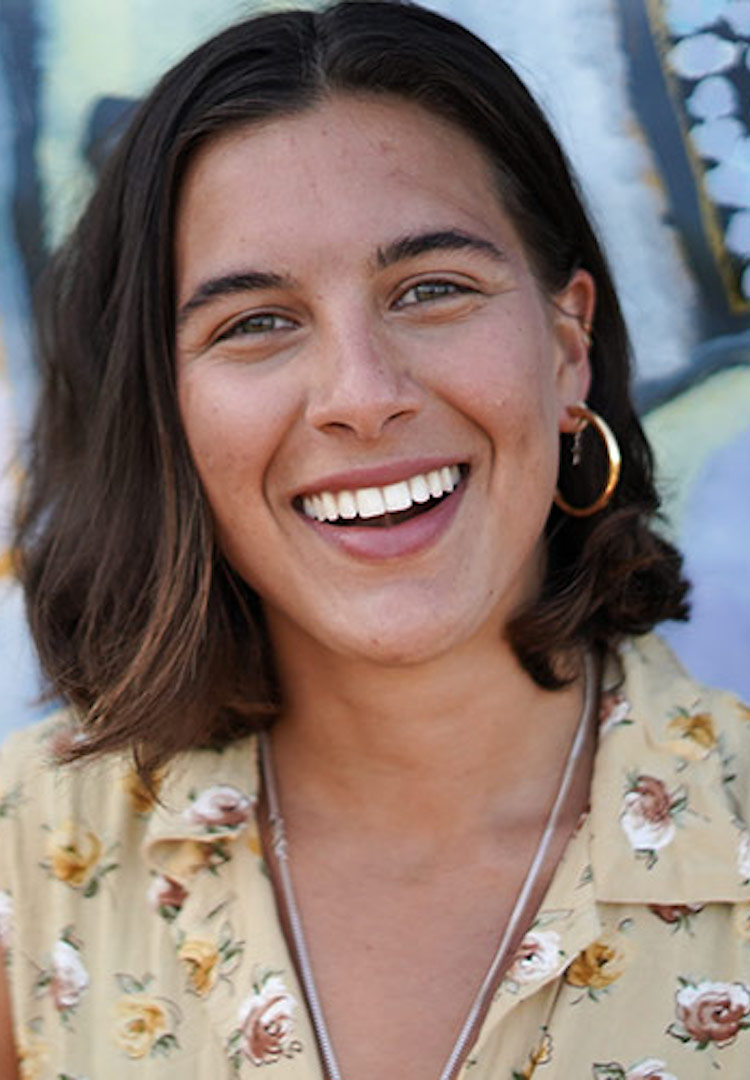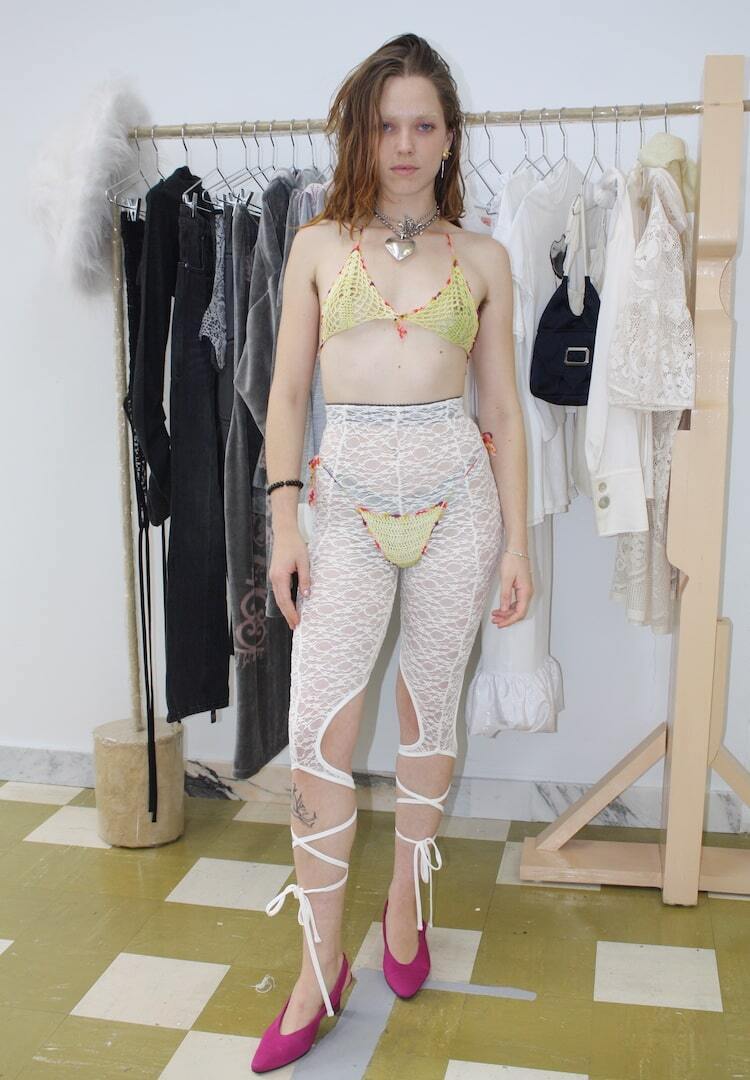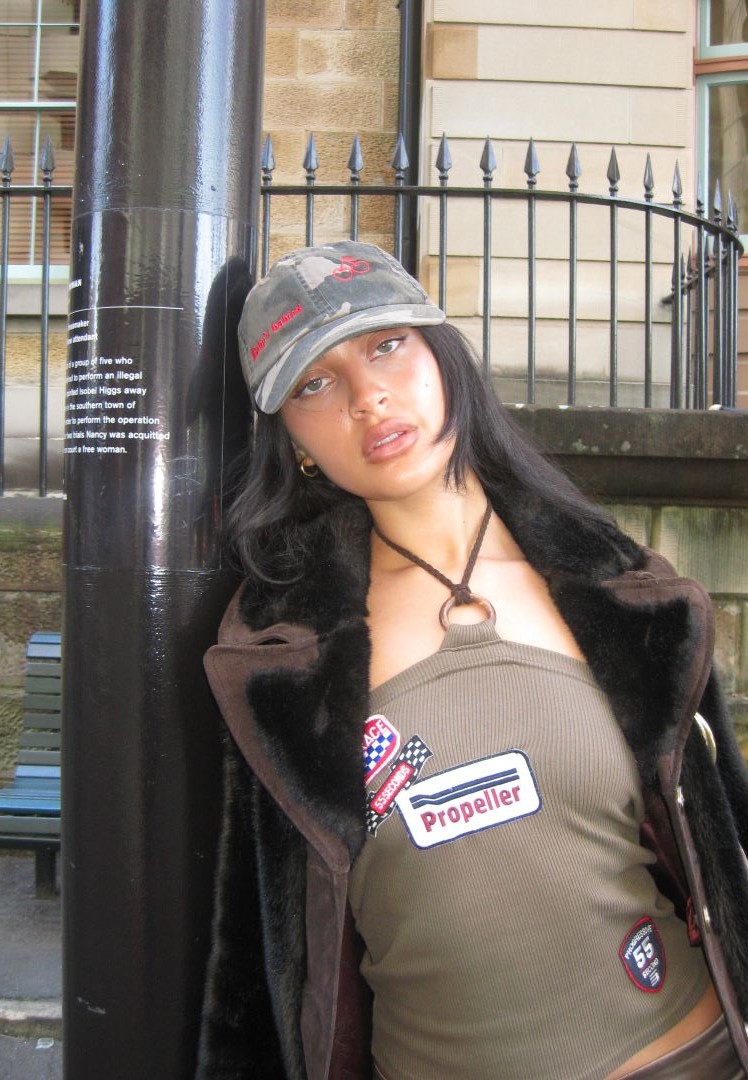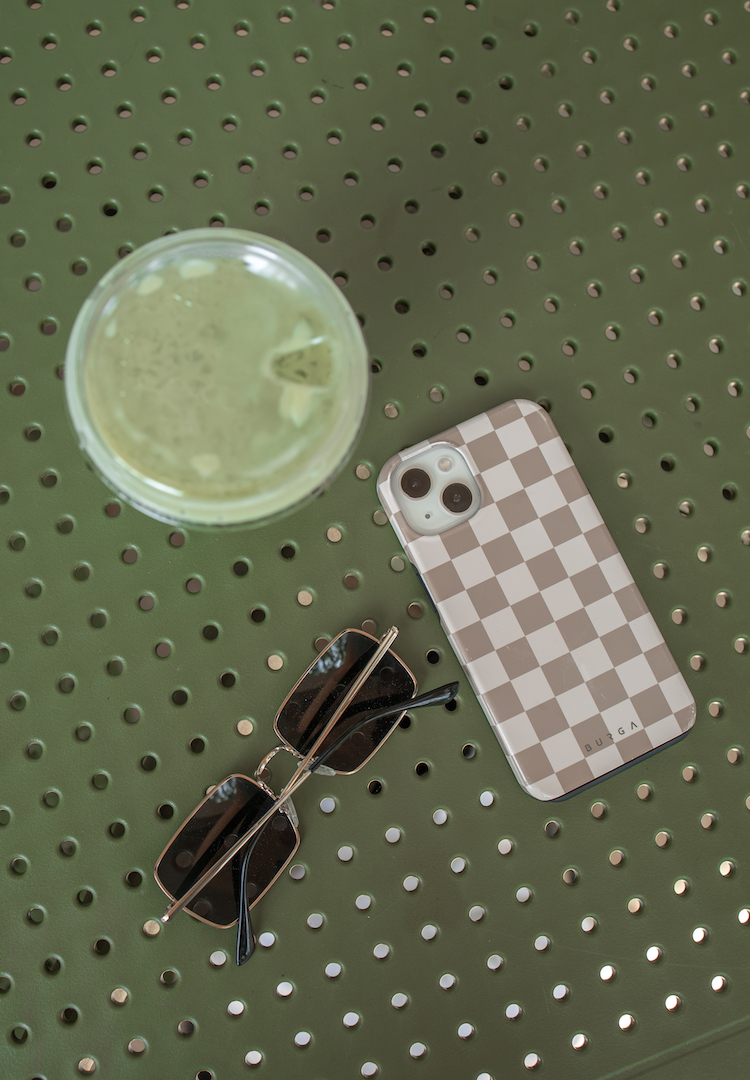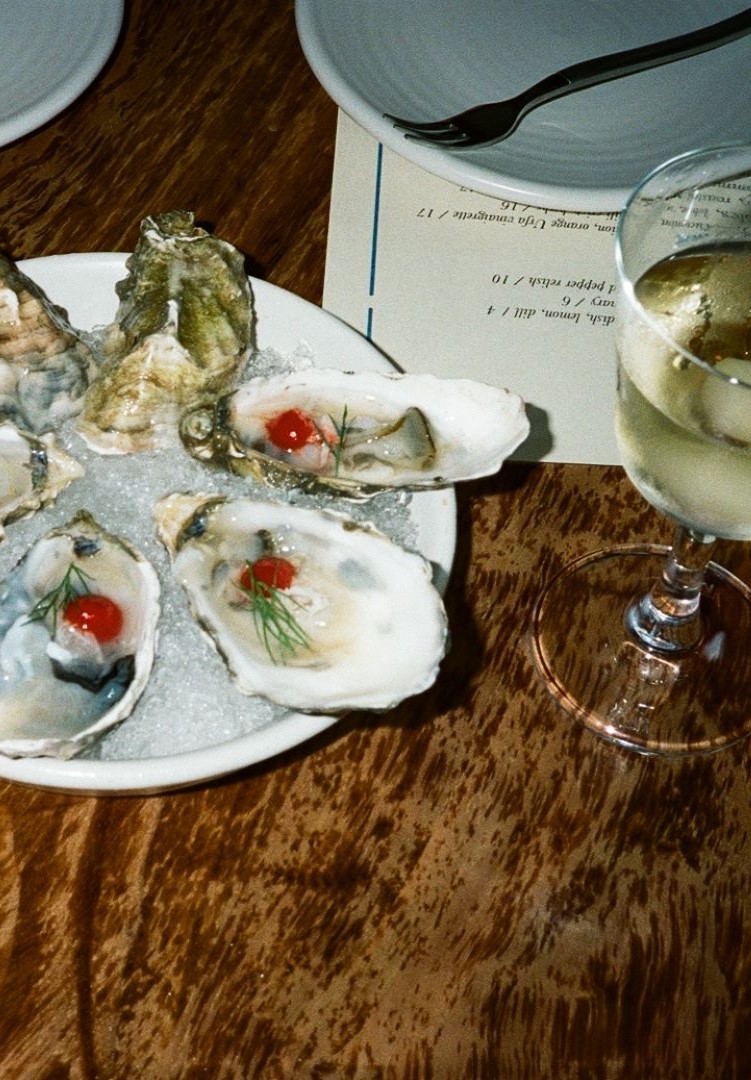How I Got Here: The creative director of the National Indigenous Fashion Awards on how she landed the role
Mobile image by Dylan Buckee
Web image by The Looking at Art from the 2019 Desert Mob Exhibition
WORDS BY CAIT EMMA BURKE
Persistence and passion.
Have you ever stalked someone on LinkedIn and wondered how on earth they managed to land that wildly impressive job? While the Internet and social media might have us believe that our ideal job is a mere pipe dream, the individuals who have these jobs were, believe it or not, in the same position once, fantasising over someone else’s seemingly unattainable job.
But behind the awe-inspiring titles and the fancy work events lies a heck of a lot of hard work. So what lessons have been learnt and what skills have proved invaluable in getting them from daydreaming about success to actually being at the top of their industry?
Welcome to How I Got Here, where we talk to women who are killing it in their respective fields about how they landed their awe-inspiring jobs, exploring the peaks and pits, the failures and the wins, and most importantly the knowledge, advice and practical tips they’ve gleaned along the way.
This week, the Creative Director of the National Indigenous Fashion Awards, Nina Fitzgerald, tells us how she landed her dream gig. Nina didn’t have a straightforward road into the fashion industry. In fact, she didn’t start out in fashion at all. There was a lot of indecision and trial and error that came first, particularly during her university days, where she tried out three different degrees, before deciding on a Bachelor of Science.
But it was this process that helped her realise that, while she was passionate about learning, there was an element of creativity that was missing from each of these degrees, something she would seek out in future jobs and experiences.
Nina comes from a large Aboriginal, Torres Strait Islander and Irish-Australian family and while at university in Melbourne, she found herself frustrated and disheartened by the lack of awareness that many Australians had when it came to First Nations peoples and their cultures. She knew that she wanted to make a meaningful change in this area, and after working in Indigenous health research, she decided to return to the two things she had always been passionate about; art and fashion.
After landing a front of house role at the Darwin Aboriginal Art Fair in 2018, she worked her way up the ladder, and in her own words “harassed them (literally) until they caved and offered me a job”. It’s a great reminder that persistence, when paired with passion and focus, really does pay off. Here’s what she’s learnt along the way.
What do you do and what’s your official job title?
I am employed by the Darwin Aboriginal Art Fair Foundation (DAAFF) as the Creative Director for the inaugural National Indigenous Fashion Award! This is my first experience working in this industry and I’ve learnt so much from the most caring, creative, supportive and humble people – from the designers, artists and their art centres, the Australian fashion industry, and my DAAFF colleagues and friends.
I absolutely LOVE my job. My role covers a broad range of things – from coordinating the nomination and judging process, through to the final production of the awards ceremony which, due to COVID-19, will be broadcast on NITV. I have also helped to coordinate an exciting and exclusive fashion shoot, which will be revealed soon!
Take us back to when you were first starting out. Did you study to get into your chosen field, or did you start out with an internship/entry-level role and climb the ladder? Tell us the story.
Well, this is a bit of tale and one that’s a bit of a joke among my friends thanks to my indecision during my early uni days! I started out studying a science degree at the University of Melbourne majoring in geography, mainly due to my interest in climate science and the environment. But before completing the degree, I also did brief stints in both an arts degree and biomedicine.
My interests are broad and diverse, and I was worried that by choosing one course, I would be closing the door on so many other interests of mine. I’ve always loved learning but I found the rigid structure of these university courses really challenging and felt many of them lacked a sense of creativity. Since I was a child I’ve always been creative, so this experience made me chase those opportunities down even more.
Consequently, my dilly dallying meant that it took me 18 months longer to graduate! I don’t regret it though, because the experience made me realise that the journey of dipping into different areas helped me realise my true passion. Attaining my Bachelor of Science taught me broad but important skills in critical thinking, writing and researching that have proven to be invaluable to me today.
During my days at university, I felt increasingly frustrated by the lack of awareness many of my peers in Melbourne had about Aboriginal and Torres Strait Islander peoples and our cultures. My identity and community, and those of all other First Nations people in this country, is often completely overlooked.
This sparked a fire within me to help make meaningful change in this area. After a stint working in Indigenous health research, which is super important but not quite my jam, I circled back to two things I have always loved for as long as I can remember – fashion and art.
I returned back home to Darwin during one of my uni breaks and through local connections, landed a front of house role at the Darwin Aboriginal Art Fair (DAAF) in 2018. I then harassed them (literally) until they caved and offered me a job! And here I am two years later, absolutely loving what I do.
What challenges/hurdles have you faced getting to where you are now? Can you tell us about one in particular?
Doubting myself! I think, like so many others, I am prone to the negative thoughts of self-doubt. As the years pass, I’m gradually getting better at backing myself, trusting my own knowledge and believing that I can do whatever I set my mind to. I think it’s important everyone remembers that, regardless of what industry you’re in, and particularly women. My cultural heritage includes a very large Aboriginal and Torres Strait Islander family from my mum, and Irish-Australian from my dad.
The constant questioning of my identity by others is extremely frustrating, rude and ignorant! It is based on ideas raised by the settler-colonial society, where identity is often decided by subjective assumptions and outdated stereotypes. My identity, acutely important to me, is based on family and kinship, and the connectedness we have had to this land for centuries.
Today, Aboriginal and Torres Strait Islander Australia is extremely diverse, but until the true history of Australia since 1788, including the massacres, the Stolen Generations, and the fight for Land Rights, is taught at every level across our education systems, we will remain an ignorant and diminished nation. Despite this, I remain hopeful of an Australia that will one day truly celebrate and respect its First Nations peoples, heritage and culture.

Nina wears Yinjaa-Barni Art x Patricia Floyd, Jina-Jina Collection. Photo by Kamilla A’Beckett
What do you want people to know about your industry/your role?
I work with Aboriginal and Torres Strait Islander fashion creatives and artists in a role that ethically promotes the powerful stories which have connected Australia’s First Nations peoples to the land and seas of this country – always. First Nations artists have always been inherently a part of the fashion industry because we have always been makers and creatives – artistic expression is inherent to our cultures! From intricate woven baskets and dilly bags to cultural adornment representing ancient lore. In recent decades First Nations artists have expanded their artistic knowledge to include new media such as batik, screen printing and digital forms.
I’m constantly learning in my role with DAAFF, which also runs the Darwin Aboriginal Art Fair and the Country to Couture fashion showcase. There are so many elements that must be pulled together behind the scenes and tight deadlines are often looming. But the reward of who I work for and why far outweighs the stress. The fashion industry in itself is a beast – it’s not known for diversity.
But it’s changing every day, and it’s so satisfying to be part of a new push to not only tell the stories of First Nations peoples within the Australian fashion narrative but to elevate them. Fashion is a medium that belongs to everyone – it transcends cultural boundaries and can be used as a vehicle of change that unites people and celebrates Australia’s rich heritage and vibrant cultures. So watch this space – the future of Australian fashion is so exciting!
What skills have served you well in your industry?
My role also includes research and development for the foundation, largely in regards to [the] growth and support of the First Nations fashion and textiles sector. I am very good at writing and research – skills from university I did not think would get me into working in the fashion industry!
I am also very compassionate and caring and have always believed in standing up for those who don’t have the platforms I have been given, particularly my fellow First Nations Australians. This is by far one of the most driving factors in pushing into a role that at its core promotes the true stories of this country.
What’s the best part about your role?
My role brings together so many interests and passions that are close to my heart. I have the privilege of working alongside the most innovative and inspiring First Nations artists and fashion creatives from across Australia. I get to be creative and do engaging research while working with and meeting other incredibly passionate and hard-working souls who deeply care about achieving true reconciliation in Australia.
I’m learning all the time – something I never want to stop doing. I am so grateful for that. I also am part of a fantastic team at the Darwin Aboriginal Art Fair Foundation. I adore them! We are like a little family and support each other through the highs and lows.
What advice would you give to someone who wants to be in a role like yours one day?
While this is not pertinent to my particular role, I think it’s important not to feel the need to live up to any prescribed ideas that you have for yourself or that someone has for you. While I am so proud of my identity, I do not want to be pigeonholed. As a First Nations person, I can do whatever I choose to do. We all can. We are constantly growing, learning and evolving beings, so it’s okay to change if something does not work out for you. You do you!
What about a practical tip?
I think in any industry, confidence and trust in yourself go a long way, so always remember to back yourself. But also don’t be afraid to ask questions, ask for help, bounce ideas off someone else and make mistakes! That’s how we learn and grow. And enjoy the ride!
Read the rest of the How I Got Here series here.
The NIFA has been established by the DAAFF and supported by the Northern Territory Government. It is an important capacity-building opportunity for Indigenous fashion designers and creatives and will be broadcast on NITV on 5 August 2020. Find out more here.
Looking to step up to a career in fashion? Each week we send a wrap of industry jobs straight to your inbox. Enter your details below and we’ll keep you in the loop, or browse current openings here.


